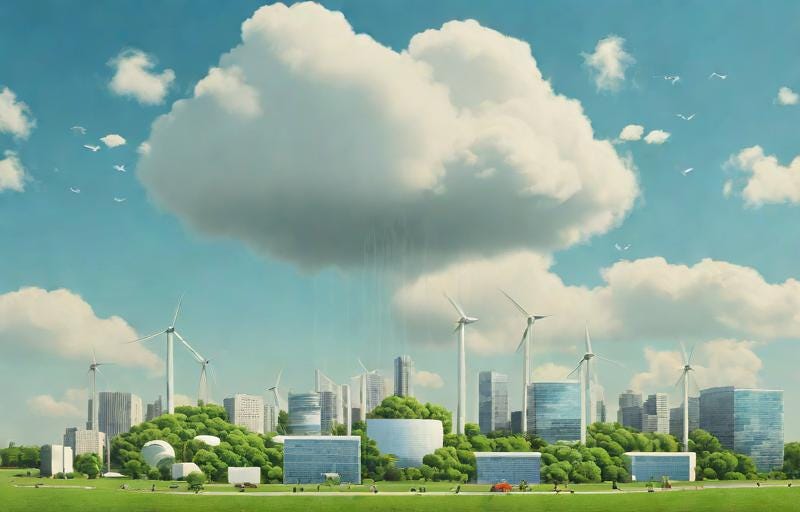Sustainable Cloud Computing: An Oxymoron or The Future?
Scaling Conversation #8
Is "Sustainable Cloud Computing" an oxymoron or the future we should strive for?
We think of a seamless, invisible medium that houses our data and powers our digital lives.
The term "cloud" in cloud computing paints an ethereal picture. Yet behind this facade lies a sprawling maze of physical servers stacked in mammoth data centers that buzz 24/7. As mesmerizing as these data fortresses are, they are equally taxing on our planet.
According to some reports, data centers are responsible for about 4% of global greenhouse gas emissions. That's more than the entire aviation industry.
Yes, you read that right!
Our insatiable hunger for data is leaving a carbon footprint that rivals the scale of globe-trotting jumbo jets. So, where does this position us in the world of sustainability?
The path to sustainability is a road less traveled. We often discuss renewable energy as the ultimate savior in various sectors, but in the cloud computing world, the adoption rate has been sluggish.
The silver lining? Momentum is building!
Titans like Google and Microsoft are setting ambitious targets to power their data centers on renewable energy. According to Greenpeace's "Clicking Clean" report, Google has committed to operating its operations carbon-free by 2030, while Microsoft's Azure initiative aims to offset all its historical carbon emissions by 2050.
These aren't mere corporate slogans; they are pledges to a sustainable business model, aligning with the broader ethos of planetary well-being.
For more insights, check out The Shift Project's Lean ICT Report and World Economic Forum's Tech for Good initiative.
Are we innovating our way out? However, relying solely on renewable energy might not be the endgame. What about computing efficiency? Or the advent of energy-efficient AI algorithms?
Think about game-changing innovations like Liquid Immersion Cooling—a technology that submerges servers in liquid coolants, drastically slashing cooling costs and energy consumption.
You can learn more about this technology in this explanatory video.
On the flip side, the edge computing paradigm offers ecological benefits. By processing data closer to the source, edge computing trims down the data sent to centralized data centers, ultimately conserving energy.
Another critical avenue to explore is public-private partnerships that are symbiotic. Governments and tech giants should foster symbiotic relationships to scale up sustainable practices.
Check out the guardian's article on the carbon footprint of data for further insights.
For instance, incentivizing renewable energy use through tax breaks or offering subsidies to transition towards energy-efficient infrastructures.
Ultimately, sustainability isn't merely a buzzword to flaunt in annual reports; it's a pledge—a steadfast, ethical pact with our planet and future generations. It's an unwavering commitment to impact.
Sustainable Cloud Computing is not an oxymoron; it is the future—a future that harmonizes technological advancement with ecological balance.


